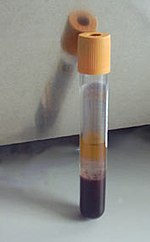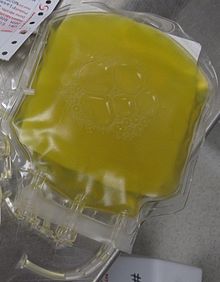Joseph R. Anticaglia, MD
Medical Advisory Board
Red blood cells supply oxygen to the body’s tissues in exchange for carbon dioxide which is eliminated by the lungs. The white blood cells fight infections by mobilizing the body’s defenses to recognize and attack viruses, bacteria, cancer cells, and foreign bodies. We need platelets for the blood to clot. Plasma is the 4th (fourth) component of blood but, what is it? And why do we need it?
Four Main Components of Blood
- Red blood cells( RBCs)
- White blood cells (WBCs)
- Platelets
- Plasma
Plasma is the light yellow liquid component of blood in which red blood cells, white blood cells, and platelets stay afloat. Plasma makes up 55% of the blood volume, and 90% of plasma is water. It contains proteins, nutrients, hormones and electrolytes.
When vials of blood are centrifuged, that is, placed in a machine that rotates at high speeds, the blood separates into plasma, white blood cells (leukocytes), platelets, and red blood cells (erythrocytes)


Blood Plasma’s Main Components
About 90% water
About 8% protein
The other 2% include components such as hormones (e. g., insulin), electrolytes (e. g., sodium and potassium), sugars, fats, vitamins, and amino acids.
Benefits of Plasma
There are significant benefits that plasma offers the human body that have gone “under the radar.” Along with water, hormones and enzymes, plasma contains other important components which work to keep us healthy.
For instance, we need plasma’s ability to transport essential substances like red blood cells, nutrients, hormones, and electrolytes to different parts of the body.
We need plasmas ability to transport waste material. Cells dumped their waste products into plasma, and plasma carries such waste through areas of the body that specialize in waste removal, such as the kidneys.
Plasma maintains blood pressure, and blood volume at a healthy level as well as playing a role in maintaining a stable body temperature.
It supports immunity with its antibodies (immunoglobulins) which defend our bodies against disease.
Plasma contains proteins that help with blood clotting to heal wounds. It helps to stop the bleeding by forming clots at the site of the injury.
Albumin is the major protein in plasma. It works to keep fluids within blood vessels preventing them from leaking into tissues causing edema as has occurred in liver disease, malnutrition, and kidney disease. It gives “hitchhikers,” such as drugs a free ride to different parts of the body
It helps maintain a healthy pH balance in the body. Electrolytes in plasma (sodium, potassium, and bicarbonate) help regulate muscle, and nerve function, as well as maintaining water and acid base balance
Recipients of Plasma Transfusions
Plasma transfusions benefit people with a wide range of conditions. When plasma is separated from whole blood within 18 hours it is called fresh. To obtain a 12 (twelve) month shelf-life, fresh plasma is frozen. A unit of fresh frozen plasma, called the “bag of gold ,” contains proteins, glucose, fats, hormones, all the coagulation factors, and other substances.

Examples of Recipients who can benefit from plasma transfusions include those with:
- Bleeding Disorders: Patients with conditions like hemophilia benefit from clotting factors in plasma to prevent excessive bleeding.
- Liver Disease: Patients with severe liver disease or conditions causing multiple clotting factor deficiency can benefit from plasma transfusions.
- Severe trauma, burns, or shock: Plasma transfusions help restore lost blood volume, and blood pressure.
- Primary Immune Deficiencies (PID): Individuals with compromised immune systems often rely on immunoglobulin (IgG), antibody therapies made from plasma to fight off infections.
- Autoimmune Disorders: Conditions such as Guillain–Barré syndrome, and myasthenia gravis have been treated with plasma-derived therapies
Plasma is an underappreciated vital component of blood. But there are gems in this “Bag of Gold, ” and more people recognize how essential it is to keep us healthy, and save lives.
References
- Joscilin Mathew. et al; Physiology, Blood Plasma; StatPearls, April 24, 2023.
- Blood basics – hematology. org blood plasma; American Society of Hematology
- Blood Plasma; science direct. com
This article is intended solely as a learning experience. Please consult your physician for diagnostic and treatment options.

